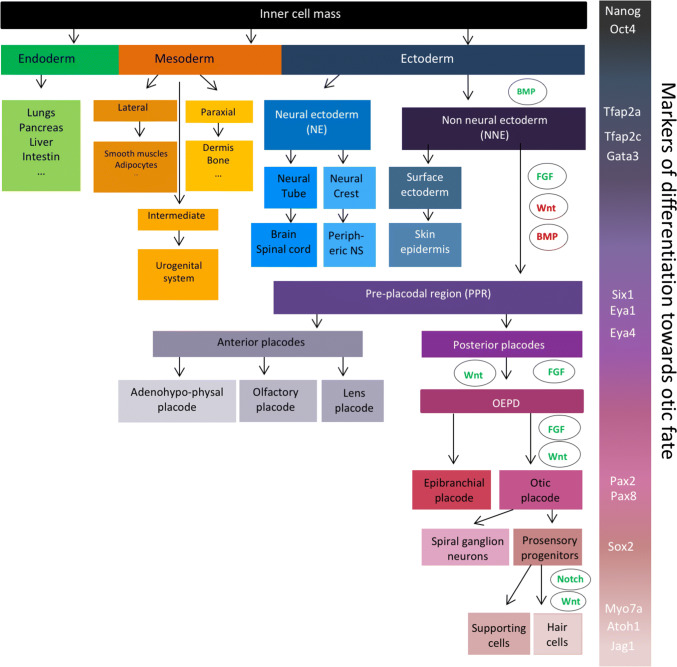Fig. 1.
Different steps of embryonic development from the blastocyst to the inner ear hair cells. Pluripotent inner cell mass of the blastocyst can generate the three germ layers: the endoderm, the mesoderm and the ectoderm. Transient BMP activation induces the differentiation of the ectoderm into the non-neural ectoderm (NNE), characterised by the expression of Tfap2a, Tfap2c, and Gata3. Combination of FGF activation, and Wnt and BMP inhibition leads to the formation of the preplacodal region (PPR) expressing Six 1, Eya1 and Eya4 transcription factors. The difference cranial sensory organs arise from this PPR. Its most posterior part, the otic and epibranchial placode domain (OEPD) further differentiates into the otic placode under the control of FGF and Wnt pathways. Some otic placode-derived progenitors will then differentiate into spiral ganglion neurons as other will proliferate in a region called the prosensory domain to give rise to the Sox2-positive prosensory progenitors. Through lateral inhibition of Notch signalling pathway, those progenitors will differentiate into hair cells and supporting cells

